
BREADBASKETS AND HEAD GASKETS — GLASSELL PARK
This entry of California Fool’s Gold is about the Los Angeles neighborhood of Glassell Park, a working class neighborhood in Northeast Los Angeles. Glassell Park’s neighbors are the neighborhoods of Eagle Rock to the east, Mount Washington to the southeast, Cypress Park to the south, Elysian Valley to the southwest, Atwater Village to the west, and the Glendale neighborhoods of Adams Hill, Somerset, and Tropico to the north.

Sometime around the 1970s, a distinct Northeast Los Angeles began to emerge. Back then, the NELA 13 gang coined an acronym that their members couldn’t have known would turn into a hip branding tool used to market luxury (yet freeway-adjacent) townhomes promising “modern living” in the form of a private dog park and two-car garages. Elsewhere in the neighborhood today, incongruous McMansions are improbably squeezed into tiny lots formerly occupied by tasteful Craftsman homes.
Still, perhaps more than any other neighborhood of Northeast Los Angeles (barring Cypress Park), Glassell Park feels largely untouched by the obliterating force of gentrification. Instead, it remains a mostly quiet neighborhood (aside from the roosters and heavy rail) of quiet charms — many of which you’ll almost assuredly never discover if you only travel by automobile.
HISTORY OF THE AREA
The first humans to arrive in what’s now Los Angeles were likely the Paleoamerican ancestors of the Chumash, who arrived sometime around 13,000 years ago. Some 3,500 years ago, the region’s first “transplants” arrived — the Tongva, who came from the Sonoran Desert to the east.
The Tongva’s reign ended shortly after Spaniard Gaspar de Portola‘s overland expedition passed through the area in 1769, an event that set the stage for the Spanish Conquest. The European conquerors constructed their first area mission, Mission San Miguel, in the flood plains of Whittier Narrows in 1771. In 1776 someone had the bright idea of moving to higher ground and they built (or forced the Tongva to build) the Mission San Gabriel Arcangel in what’s now San Gabriel — roughly 14 kilometers east of what is now Glassell Park.
In 1781, the Spanish founded El Pueblo de Nuestra Senora la Reina de los Angeles del Rio de Porciuncula about seven kilometers to the Glassell Park area’s south. The area that’s now Glassell Park was located just beyond the Pueblo’s four square leagues of land and became part of Rancho San Rafael.
RANCHO SAN RAFAEL & THE VERDUGO FAMILY
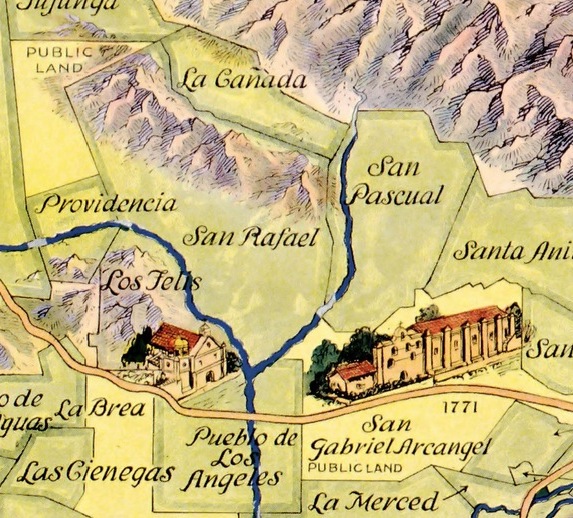
Mexico gained independence. Verdugo left his property to his surviving son, Julio Antonio, and daughter, Maria Catalina. In 1848, as a result of the US‘s victory in the Mexican-American War, the region was again claimed by a new variety of conquerors but the 1848 Treaty of Guadalupe Hidalgo required the honoring of pre-existing land holdings and thus Rancho San Rafael remained in control of the Verdugos for the time being.
THE GLASSELL FAMILY (AND ANDREW CHAPMAN)
Two Anglos entered the picture in the 1860s, Andrew Glassell and Alfred B. Chapman. Glassell had been born on a plantation in Orange County, Virginia in 1827 and recently moved to Los Angeles where he formed a partnership with Chapman, a lawyer from Alabama who’d arrived in Los Angeles in the 1850s.
On the morning of 8 March 1869, the two purchased Rancho San Rafael at a foreclosure auction. In 1871 the two filed a lawsuit known as “The Great Partition” against thirty-six defendants which resulted in the division of the rancho into 31 properties. In 1889 Glassell built a stately Victorian which he modestly named “The Ranch House” in Glassell Park. There Glassell lived and grew citrus and walnut trees until his death in 1901.
THE LOS ANGELES PIGEON FARM/PIGEON RANCH
The first big attraction of note in Glassell Park was the three-hectare Los Angeles Pigeon Farm, built on the banks of the Los Angeles River in 1898 by J. Y. Johnson. Although today frequently disparaged as “rats with wings,” the Pigeon Ranch (as it was also known) soon became one of Los Angeles’s premier tourist attractions, commemorated with numerous postcards and stereoscopic cards. In 1914, heavy rains caused flooding which destroyed the farm and reportedly killed or freed about half a million birds. The river would flood two more times in the 1930s and to prevent further flooding its entombment in concrete began in 1938.
BIRTH & ANNEXATION OF GLASSELL PARK
Glassell Park was subdivided in 1907. Some of the streets were named after Andrew Glassell’s family members. Toland Way, for example, came from the name of Glassell’s first wife, Lucie Toland. Andrita and Marguerite streets are named for his daughter and daughter-in-law, respectively. Glassell Park was annexed, along with neighboring lands, by the city of Los Angeles in 1912 as part of the Arroyo Seco Addition.
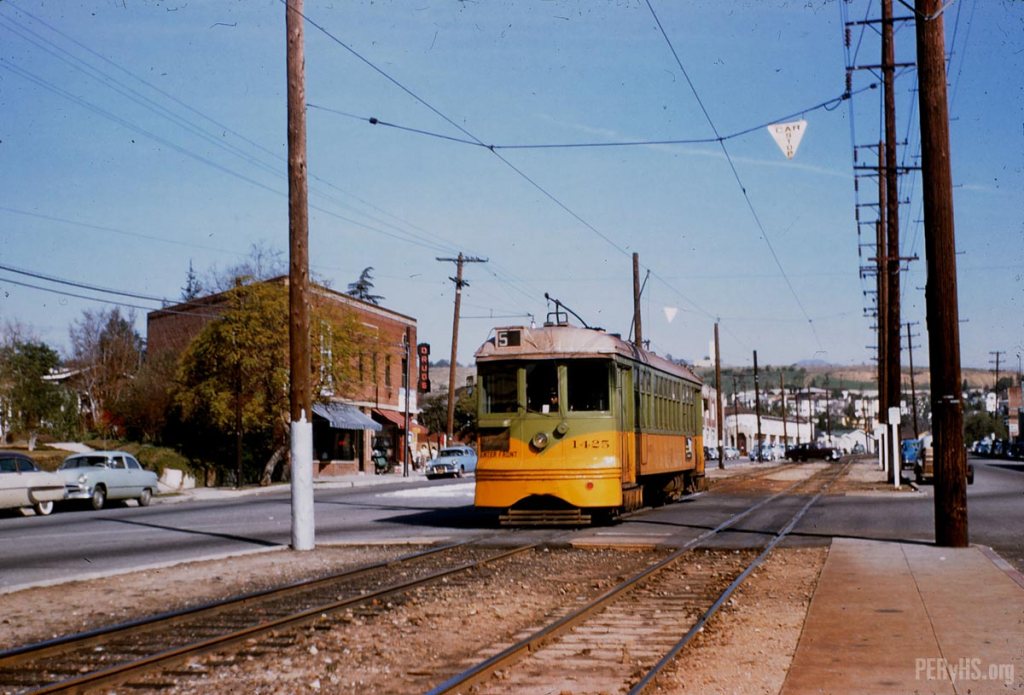
TRAINS IN GLASSELL PARK
In neighboring Cypress Park, a large rail yard was built for the twenty-line Los Angeles Railway (LARy). From 1920 until 1958 that railway’s E (later renamed the 5) line ran up Cypress Avenue and Eagle Rock Boulevard, connecting the distant communities of Eagle Rock and Hawthorne. In 1958, Los Angeles Metro Transit Authority (LAMTA) took over operations. Rather than modernize the rail, it was instead decommissioned in 1963 and replaced with bus service.
In 1923, Southern Pacific established their Taylor Yard rail yard in Glassell Park to relieve pressure on Downtown’s busy River Station and Midway yards. In the 1960s, Taylor Yard grew less busy after the railroad was rerouted through the Cajon Pass. After 1985, Taylor Yard ended most operations, and beginning in 1997, Southern Pacific (and later Union Pacific) began selling off parcels of the property. Most of the old structures were only demolished in 2009.
THEME HOSIERY BUILDING
I haven’t whipped out a tape measure but my suspicion is that the tallest building in Glassell Park is the not-terribly-tall Ribet Academy. The building in which it is located was constructed in 1923 for the Theme Hosiery Factory. It was first converted into a school in 1960 when the Los Angeles Archdiocese took over and turned it into an all-boys high school. It was taken over by its current tenants in 1992.
LOS ANGELES’S BREADBASKET
The area has long been an important baking district in Los Angeles, going back at least to the 1870s, when many German American bakers operated out of Lincoln Heights (then still named East Los Angeles) and other Eastside neighborhoods. Today there are still several bakeries and related factories operating (or still standing, at least) clustered around Glassell Park.
The Peking Noodle Factory was established there in 1924 and is still in operation.
The beautiful Dutch Colonial Revival Van de Kamp Bakery was designed by J. Edward Hopkins. It was built in 1930 but closed in 1990 and is now home to the LACCD Van de Kamp — International Education and Workforce Development Innovation Center.
There’s also Action Cookies, Auntie Dee’s Pan De Manila, Bender Baking Co, France Bakery, Mardy’s Munchies, Sweet Tooth Bakery, Tortilleria La California, and Triple Star Bakery (which I’ve been to).
VALLEY DAIRY COMPANY
Southern California has long been important in the dairy industry and California is still the leading dairy producer in the country. Southeast Los Angeles and North Orange County were home to Dairy City, Dairy Valley, and Dairyland, but today most of the industry has moved to more rural environs. The Art Deco style Valley Dairy Company Building was built in Glassell Park in 1931 but is now home to JM Carden Sprinkler Co., who’ve been manufacturing sprinkler systems since 1953.
HEMPHILL DIESEL ENGINEERING SCHOOL
The Hemphill Diesel Engineering School was established in Glassell Park by Ralph Hemphill in 1933. The building retains a beautiful Art Deco frieze portraying diesel-fueled machinery. Beginning in 1945 the building became a Capitol Records pressing plant and remained such until the 1970s. Since then it’s been used at least once as an art space although I’m not sure what’s in there now. Like many of the old warehouses on San Fernando, there are few indicators on the outside of what is occurring within.
GLASSELL FAMILY LOSSES
The theme park-like graveyard that’s Forest Lawn Cemetery was established in neighboring Glendale in 1906. During the Great Depression, however, it expanded into Glassell Park when the Glassell family sold 62 acres of their land. Acacia, Babyland, Commemoration, The Court of Freedom, The Forest Lawn Labyrinth, The Great Mausoleum, The Haven of Peace, Lullabyland, Rest Haven, Victory, and other areas of Forest Lawn are all located within Glassell Park.
In 1936, using eminent domain, Glassell Ranch House was seized by the government and demolished to make way for the PWA-constructed Verdugo Road Junior High School (now known as Washington Irving Middle School). I don’t know who the architect was but it does remind me of the Robert Stacy-Judd-designed North Hollywood Masonic Temple Lodge 542.
POSTWAR GLASSELL PARK
In the early 1950s, the first segment of the 2 Freeway (then known as the Allesandro Freeway) was constructed from the border between Silver Lake and Echo Park, and Forest Lawn. The US Supreme Court had ended the enforcement of racist housing covenants in 1948 and that, coupled with the construction of a freeway, are both likely signs that a demographic shift of more affluent Angelenos from the neighborhood was underway. In the 1960s and ’70s, the population grew increasingly and overwhelmingly Latino and foreign-born. Today Glassell Park’s population is 66% Latino of any race (mostly Mexican), 17% Asian (mostly Filipino), 14% white Anglo, and 1% black. Today roughly 52% of the neighborhood’s populace are foreign-born.
DREW STREET
The roots of the Avenues Gang are in a social club that began in Highland Park in the 1940s. By the 1960s, they had evolved into a criminal street gang whose primary source of income was the trafficking of heroin. They eventually spread into Cypress Park, Eagle Rock, Mount Washington, and Glassell Park. A house on Drew Street was home to the Drew Street clicka who were led by Maria “Chata” Leon, a woman who moved to Drew Street around 1985 — the same year of her first arrest for assault with a deadly weapon. She was arrested for selling marijuana and PCP in 1992 and had thirteen children by four or five different fathers who in some cases following were also allegedly engaged in dealing crack, meth, mayhem, and murder.
At their height, there were supposedly 200 members of the Drew Street gang. Following the killing of a rival gang member in Cypress Park, 500 law officers descended on the Drew Street House in 2008 and engaged the gang in a shootout which left Danny “Klever” Leon and his cousin, Jose Gomez, dead and many more imprisoned.
The Drew Street House was said to contain secret compartments and booby traps and was demolished — although I wouldn’t be surprised if partly for symbolic reasons as well. Even with the house gone there were fears that the gang would return and some suggested renaming the avenue something with which gang members would less likely want to be associated. Names including “Marshmallow Place,” “Cotton Road,” and “Rainbow Place,” were floated. I doubt if many members of the gang were aware or cared that the street’s name came from Andrew Glassell’s son, Drew, and today it remains Drew Street. However, the former location of the house is now the location of the Glassell Park Community Garden.
THE NIGHT STALKER
Even more feared than The Avenues, at least for a time, was Richard Ramirez, a serial killer nicknamed the Night Stalker. His second known murder was of a 78-year-old woman (although most accounts list her age at the time of death as 79) named Jennie Vincow, who had moved to Los Angeles from New York three years earlier. On 28 June 1984 Ramirez entered through the ground floor window of a two-story apartment on Chapman and after failing to find any valuables, stabbed and slashed Vincow to death and afterward sexually abused her body. Until his capture fourteen months later, the Night Stalker murdered at least twelve more victims during his reign of terror.
PASSENGER RAIL IN GLASSELL PARK
In 1992, commuter rail service was instituted by Metrolink, whose Antelope Valley and (on weekdays only) Ventura County train lines pass through Glassell Park and stop nearby at the Glendale Transportation Center (located just a couple of blocks outside the neighborhood). Metrolink’s Central Maintenance Facility (CMF) is also located in Glassell Park which was visited by fellow a Southern California explorer.
Although it has been moved several times over the years — most recently to make way for an affordable housing development — the area is still home to the old Dayton Avenue Signal Tower (Figueroa used to be Dayton Avenue), built in 1931. In 2000, Amtrak took over the ATSF railway‘s San Diegan train and began connecting San Luis Obispo in the north with San Diego in the south with its Pacific Surfliner. As with Metrolink, it stops nearby at Glendale Station.
RIO DE LOS ANGELES STATE PARK
Just north of the CMF is Rio de Los Angeles State Park, which opened on a former portion of Taylor Yard in 2007. The park grounds include sports fields and restored wetlands. Behind them are the abandoned brownfields of Taylor Yard.
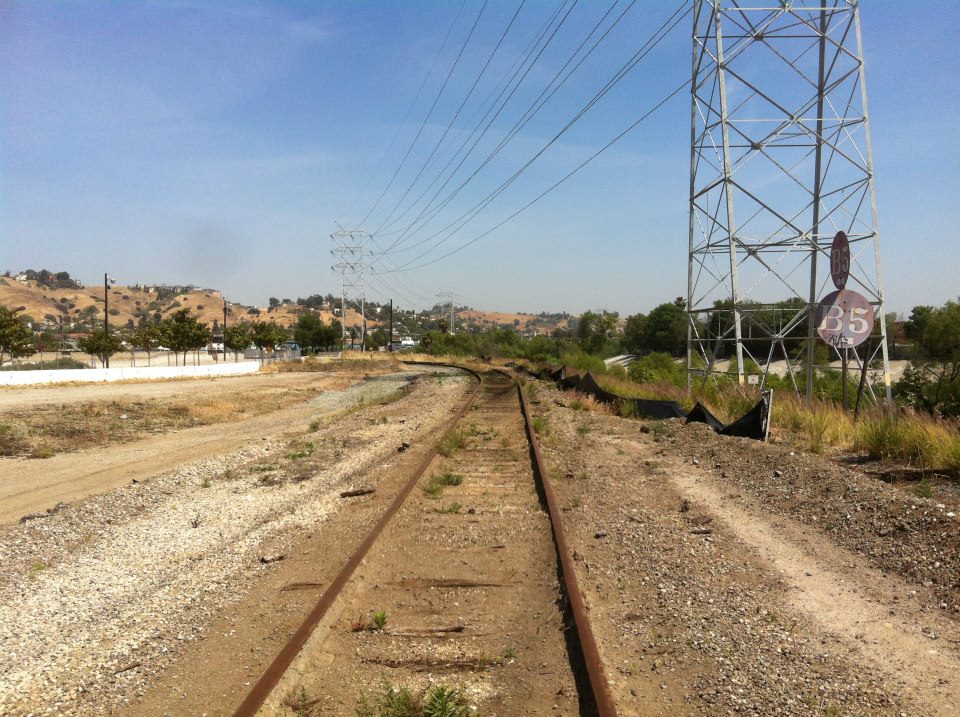
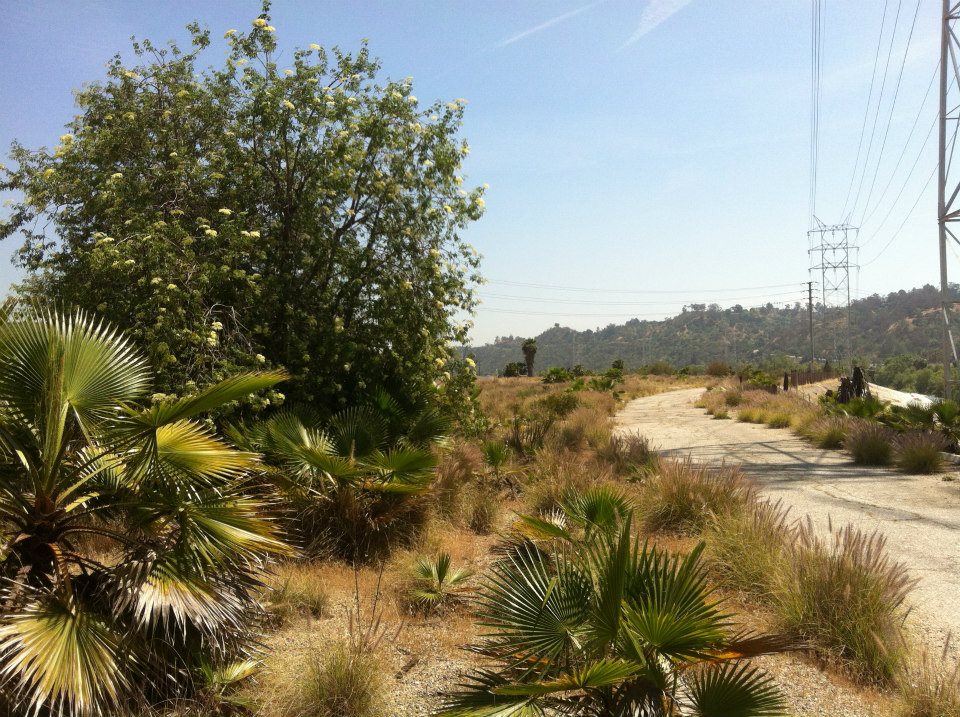


The remaining part of Taylor Yard’s 100-hectare property — the largest undeveloped parcel along the Los Angeles River — is scheduled for restoration and inclusion in the planned Riverfront District, which will extend from Piggyback Yard in Lincoln Heights to Atwater Village and Glendale. It hasn’t happened yet, though, and it remains an area of urban ruins for now.
In 2013, the four-kilometer soft-bottom section of the Los Angeles River, including the portion along the edge of Glassell Park, was part of the Glendale Narrows Recreation Zone pilot program and saw kayaks, canoes, and other crafts enter the water.
Other local parks and open spaces include tiny Juntos Park and Hidden Canyon.
The Glassell Park Recreation Center includes a track, pool, youth center, gymnasium, auditorium, tennis courts, playground, picnic tables, basketball courts, baseball diamond, a swimming pool, and grills.
GETTING THERE AND AROUND
As with many Los Angeles neighborhoods, there is no downtown or high street in Glassell Park, just pockets of businesses stretched along linear arteries like Eagle Rock Boulevard, Fletcher Drive, and San Fernando Road, and Verdugo Road. Some will use this to support their belief Los Angeles was primarily built around the car — a belief that is only correct if by “car” one includes streetcars and freight rail.
There are a few small shopping centers/pod malls like Verdugo Plaza and the Coreano Mission Revival style Premier Plaza.
The Glassell Park Improvement Association has installed signs informing visitors that the corner of Glassell Park isolated by the 2 Freeway (and therefore perhaps more aligned with Glendale) contains two blocks between Wawona Street and York Boulevard that shall henceforth be known as “Verdugo Village.”
I guess I should be happy that it’s not “The Village at Verdugo” (although that trite and inescapable naming convention is represented within the “village” by “The Salon at Heirloom LA.”) However, it hardly feels to me like a village with its assemblage of unremarkable businesses — although the tile at Ace TV Repair is nice. Just north of Verdugo Village is the old Watts subdivision, a residential tract with Westminster-like streetlights that is arguably not less interesting and yet remains undesignated by signage (perhaps local homeowners are less keen about reviving that name).
All of Glassell Park is still served by public transit, including Metro lines 68, 83, 84, 90, 91, 94, 603, 685, and 794. Walkscore gives Glassell Park a transit score of 43, a walk score of 59, and a bike score of just 37. There are public stairways as well, covered in Walk #3, under “Glassell Park North,” in Charles Fleming‘s locally-popular book, Secret Stairs. In other words, it’s easily walkable if not always conveniently so.
None of this will make the lazy get out of their cars, of course. Those who can’t muster the energy to walk two blocks to buy a pack of cigarettes or a cup of coffee ironically possess bottomless wells of energy when it comes to making excuses as to why they supposedly have to drive… everywhere and every time they leave the house. These excuse-makers will most often claim that they must drive for safety reasons whilst the biggest killers in Los Angeles remain coronary heart disease, stroke, and lung disease — all tied to car dependency and not to breaking a sweat on a bike or being preyed upon by brigands.
Of course, the city could do a lot more to make Glassell Park more walkable, and not just by restoring train service (although that would be great). More bike lanes would certainly be nice. Major streets like Eagle Rock, Fletcher, and San Fernando are all much less pleasant for living creatures than Verdugo and Cypress for that simple reason simply because they have shade. San Fernando is particularly unpleasant for — in some places, the sun-baked sidewalks are so skinny that one must walk into the street just to pass utility poles and in doing so put one’s life into the hands of that street’s speeding, distracted motorists.
GLASSELL PARK EATS
Glassell Park is home to several local chains including Downey-based La Pizza Loca, Hollywood-based Los Burritos, and Compton-based Egg Roll King. It’s also home to ABC Donuts, Big Tummy Submarine Sandwiches, China House, La Esquina, Gorditas Lupita, Kusina Filipina, Little Ongpin, Lupita’s Tamales, Lutong Bahay, Modern China, Nanay Gloria’s Fast Foods, Rio Restaurant, Sizzling Wok & Grill, Tacos La Estrella, Tacos La Fonda, Texis Restaurant No. 5, Toto’s Lechon Manok, and Uno Roll & Teriyaki. There are often taco stands set up at Verdugo & Ave 33 as well as in front of Azteca Tire. Taco trucks regularly parked in the neighborhood include El Taco Feliz, Monster Taco, Tacos Don Paco, and Tacos Manzanillo.
Sadly, most of the places in which I’ve eaten in Glassell Park are fast-food chains (and whatever Denny’s is). The only non-chain place at which I’ve eaten thus far is Lemon Poppy Kitchen, which features Romanian specialties, which might seem strange since the Eastside’s Eastern European population is often overlooked (at one time many Russians lived in Glassell Park) but there is a Romanian church across the church with a parking spot under a sign reading “Romania” so there you go.
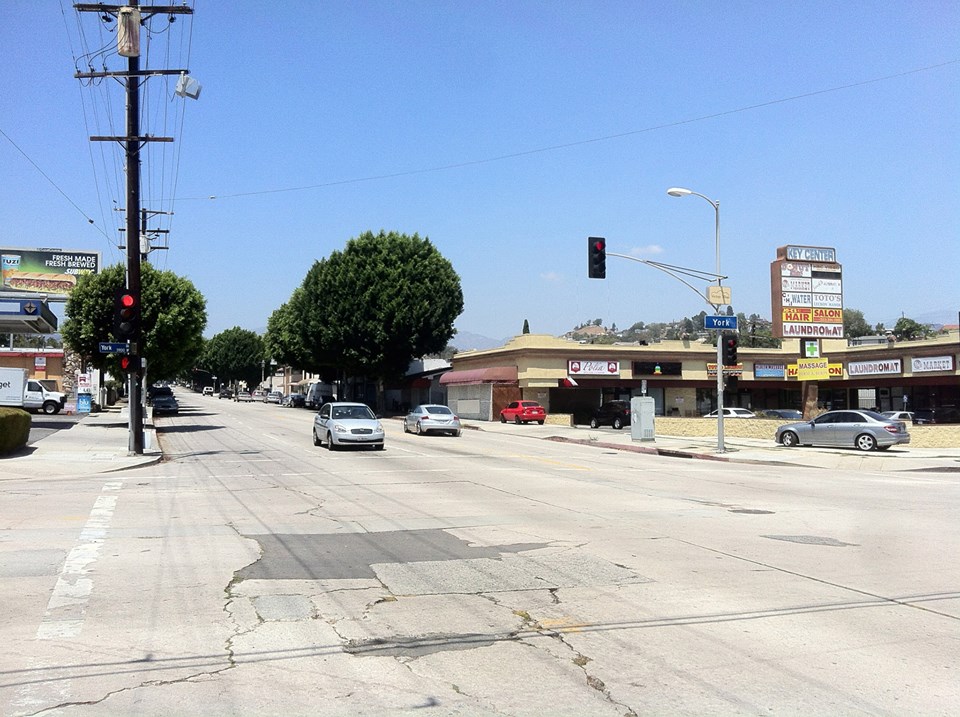
One of the best-known eateries in the neighborhood is Polka Polish Restaurant, visited by the late great Huell Howser visited in Visiting…With Huell Howser Episode #1601 (2008).
I suppose I’ll mention that Jamie Oliver filmed an episode of a show called Jamie Oliver’s Food Revolution at Patra’s Charbroiled Burgers. I won’t give that guy a chance until he undergoes a style revolution.
f you’re like me and you’re more likely to patronize a market than a restaurant on any given day, you might find it useful to know that Glassell Park is home to El Ranchito Market Grocery, Fiesta Market Grocery, Happy’s Liquor, Jumbo Market, La Esquina Meat Market, Mi Ranchito Market, OPDC HUB Raw Milk Store, Seafood Ranch Market, Super A Foods, and Temo Mini Market Antojitos.
Probably the most popular market, though, judging by the crowded aisles and nightmarish parking lot, is Super King Market, a local chain established in Anaheim‘s Little Arabia in 1993.
Glassell Park finally got a farmers’ market in May of 2014, which takes place at The Goodwill Community Enrichment Center. Right now it takes place on Thursdays but come 16 August it will move from to Saturdays.
GLASSELL PARK ARTISTS, ARTISANS, AND ACTIVISTS
There are many small factories that sprang up around the old railroad tracks which for some time have been repurposed, often as recording studios and under-the-radar art spaces. Fifty years ago, Ed Ruscha moved to the neighborhood where he maintained a studio at 3327 Division Street.
In 2010 and 2011, a couple of Iowans (Eric and Hazel) ran Show Cave, an art/film/music space located in an attractive building constructed in 1931. Back in 2010 I there saw Toshio Matsumoto‘s 1969 film, Funeral Parade of Roses (薔薇の葬列).
Many artists have erected signs advertising their neighborhoods in Los Angeles. In 2013, an artist named Justin Stadel erected a “Glassellland” sign on a hillside. Its novelty, if it can be called that, is that it added the word, “land,” making more obvious the connection to the long-gone Hollywoodland real estate sign. What statement it’s meant to make — if any — is unclear to me but whatever it is, it apparently warrants a Facebook page.
The New Seed is an “eco pop-up shop” which just popped up on Avenue 34. Its Facebook page states that one can there procure “eco, sustainable, herbal remedies, & local art.”

At Cena Sin Pistolas — a space on Fletcher Drive for art and activism — I met caterer Meg Taylor who runs Cooking Corps, a weekly (vegan) dinner at the space (with food provided by Comida No Bombas).
Other artistic and artisanal spaces in Glassell Park include Chaparral Studio, Chipps & Mark Woodcrafts, Keystone Art Space, Molten Metal Works, Baum-Kuchen, Bauer Pottery Company, Scout Regalia,Tigrefino Projects, and Velo Love.
GLASSELL PARK FILM
According to Yelp there are several video rental places in Glassell Park including IPTV, J Video, Landmark Video, 21 Video, and Video Market — none of which have much if anything in the way of reviews and/or websites.
I saw signs for El Mexicano Video Rental Mini Market and HBC Video (but no store) so it might be time to update the database. It’s certainly a good idea to call ahead before trying to rent video recording media from any of them. Smut fans might want to check out Romantix, which has an adult arcade.
There is at least one film studio located in Glassell Park, Riverfront Stages, which includes standing stages of courtrooms, prisons, morgues, homes, and other locations for film productions. After opening their first location in Sylmar, the Glassell Park location followed in 2008.
If there are any filmmakers born in Glassell Park, please let me know in the comments and I’ll update this section.
GLASSELL PARK GAMES
Some of the video rental places (which may or may not exist) listed in the previous section also purportedly rent video games. If you want to play it safe — and don’t own a phone (or just prefer coin-operated video games) — there are video games for play at Launderland, Happy Donuts, and Heavenly Laundromat.
GLASSELL PARK MUSIC
I’m not aware of any bands or musicians hailing from Glassell Park although a rapper who calls himself Serengeti has a song called “Glassell Park.” The neighborhood is also home to ABC Rehearsal Studios, Iqaat, and XIX Studios.
GLASSELL PARK NIGHTLIFE
There’s one neighborhood bar in Glassell Park, The Verdugo Bar, which seems to attract people I (whether rightfully or wrongly) assume to mostly be students from nearby Occidental — because why else would a bar have once had beer pong if but for college students? The Verdugo has occasional DJs and — in an apparent appeal to adults — a rotating beer selection and nice beer garden.
Beer fans should check out Eagle Rock Brewery — although they’re located neither on Eagle Rock Boulevard nor in the Eagle Rock neighborhood. They also opened in 2009, ending a 60 year local, microbrew dry spell. They offer free brewhouse tours and have a taproom available for visitors.
Aspiring pool sharks can amuse themselves at Green Room Billiard. There’s also just one nightclub in Glassell Park, Los Candiles Night Club. Magician Pop Haydn, frequent performer at the Magic Castle, also lives in the neighborhood and is available for private parties, if you or a friend are looking to spice up a shindig.
Kusina Filipina, one of several Glassell Park Pinoy restaurants, has karaoke (at certain times) and although I haven’t checked out their songbook, I wouldn’t be surprised if there are some Freestyle and Sophisti-Pop tunes amongst the more likely OPM, Pinoy Rock, and soft rock jams.
GLASSELL PARK CHURCHES
There are several churches in Glassell Park, some of which are examples of interesting architecture and include nice murals and possibly cool statues. There’s Agnus Dei Church, Arabic Holiness Church, Chinese Zion Baptist Church, The Church of Jesus Christ of Latter-Day Saints, Glendale Korean Presbyterian Church, Iglesia del Nazareno, Jehovah’s Witnesses Hall, Reformed Presbyterian Church, the aforementioned Romanian Orthodox Church Holy Trinity, St Bernard Church, Verdugo Community Church, Victory Outreach Eagle Rock, and probably more.
GLASSELL PARK SOCIETIES
There are at least two organizations purportedly serving Glassell Park specifically including Glassell Park Improvement Association (established in 1968) and Glassell Park Neighborhood Council.
MORE GLASSELL PARK
Finally, if you’re interested in learning more about Glassell Park, I, unfortunately, haven’t been able to find much besides Walking Rancho Glassell: Uncovering a Crossroads of History, made by Form Follows Function and sometime fellow explorer/fulltime NELA expert, Maryam Hosseinzadeh.
Support Eric Brightwell on Patreon

Eric Brightwell is an adventurer, essayist, rambler, explorer, cartographer, and guerrilla gardener who is always seeking paid writing, speaking, traveling, and art opportunities. He is not interested in generating advertorials, cranking out clickbait, or laboring away in a listicle mill “for exposure.”
Brightwell has written for Angels Walk LA, Amoeblog, Boom: A Journal of California, diaCRITICS, Hidden Los Angeles, and KCET Departures. His art has been featured by the American Institute of Architects, the Architecture & Design Museum, the Craft Contemporary, Form Follows Function, Los Angeles County Store, the book Sidewalking, Skid Row Housing Trust, and 1650 Gallery. Brightwell has been featured as subject in The Los Angeles Times, Huffington Post, Los Angeles Magazine, LAist, CurbedLA, Eastsider LA, Boing Boing, Los Angeles, I’m Yours, and on Notebook on Cities and Culture. He has been a guest speaker on KCRW‘s Which Way, LA?, at Emerson College, and the University of Southern California.
Brightwell is currently writing a book about Los Angeles and you can follow him on Ameba, Duolingo, Facebook, Goodreads, Instagram, Mubi, and Twitter.



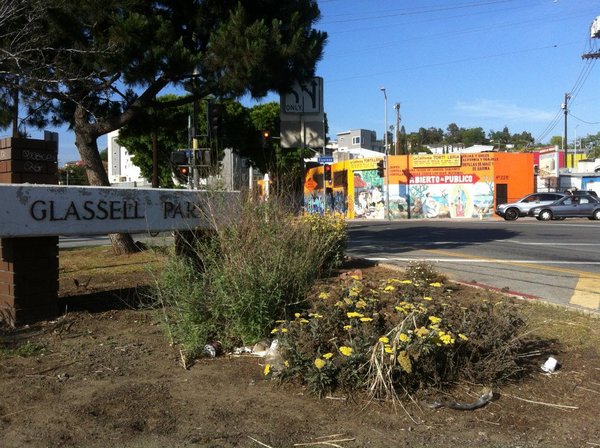



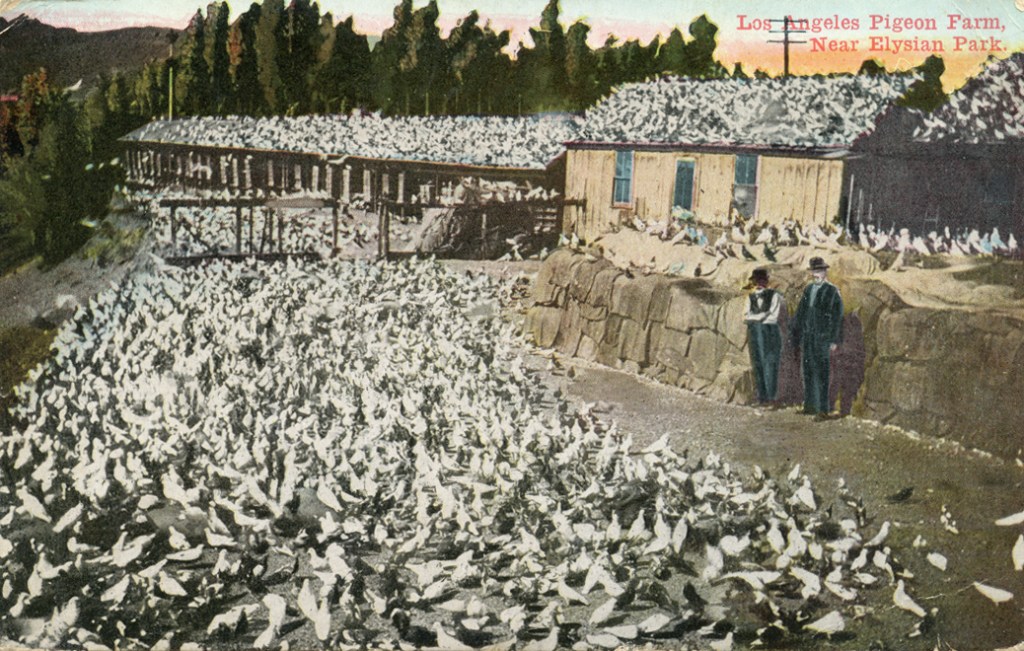



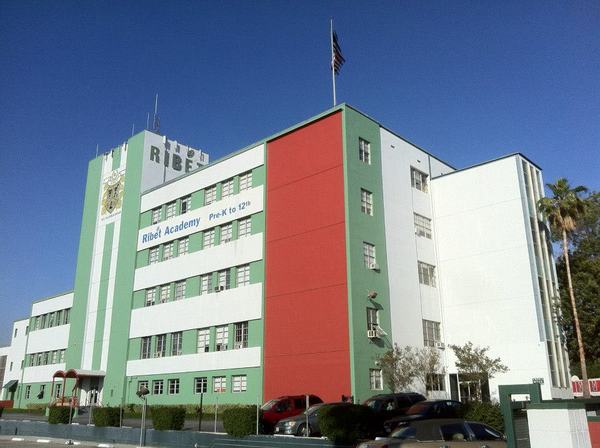


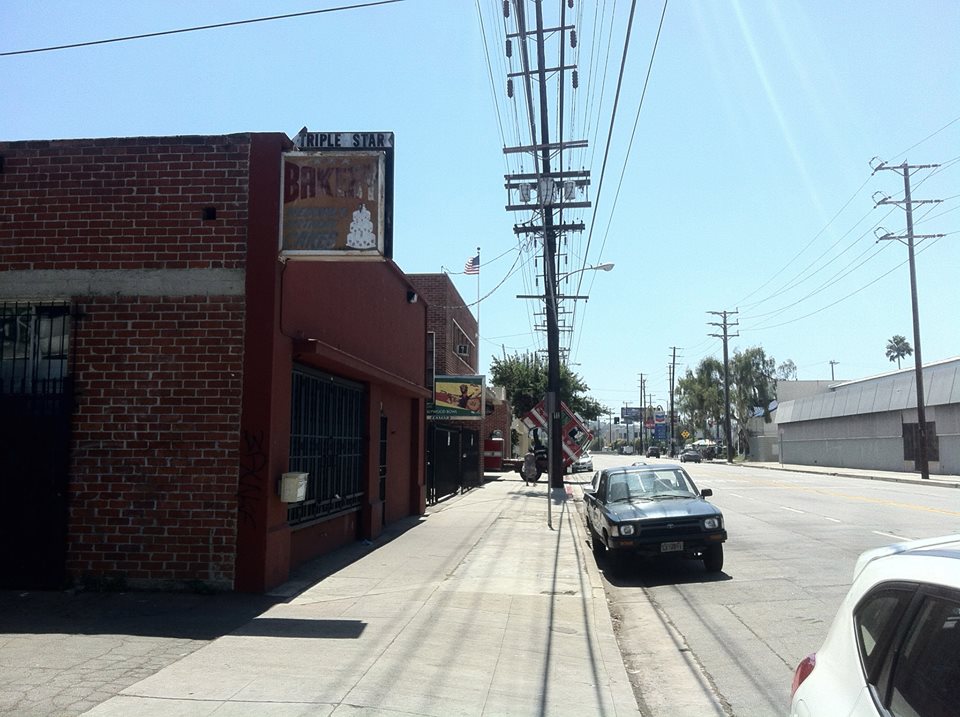

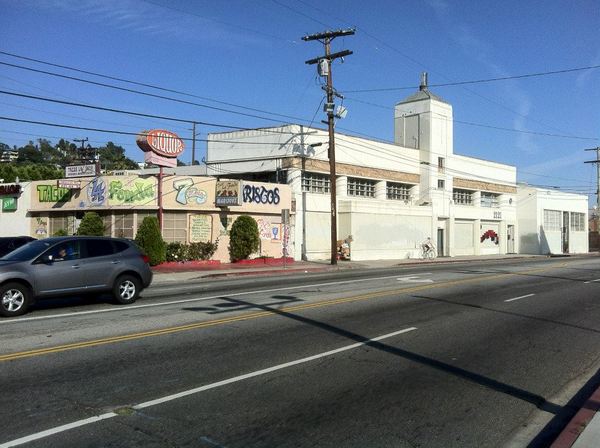

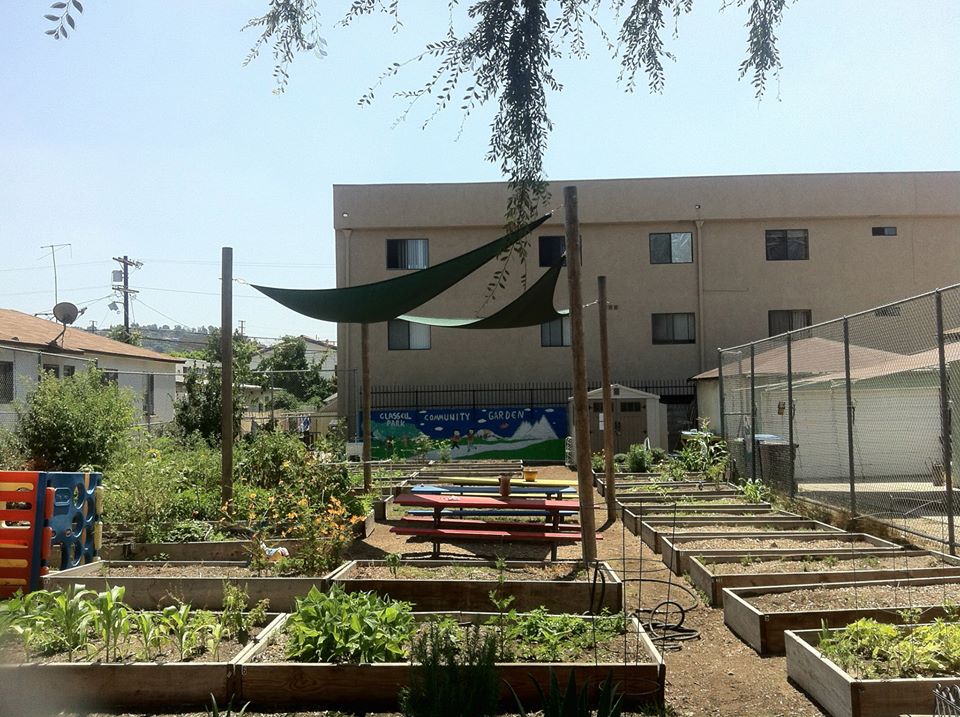


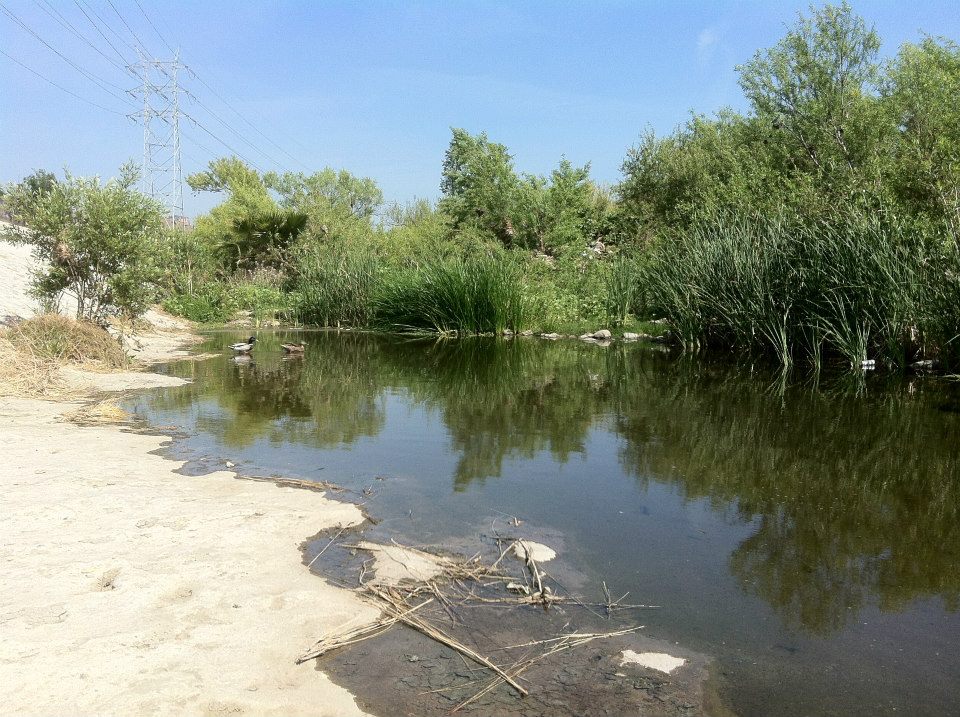

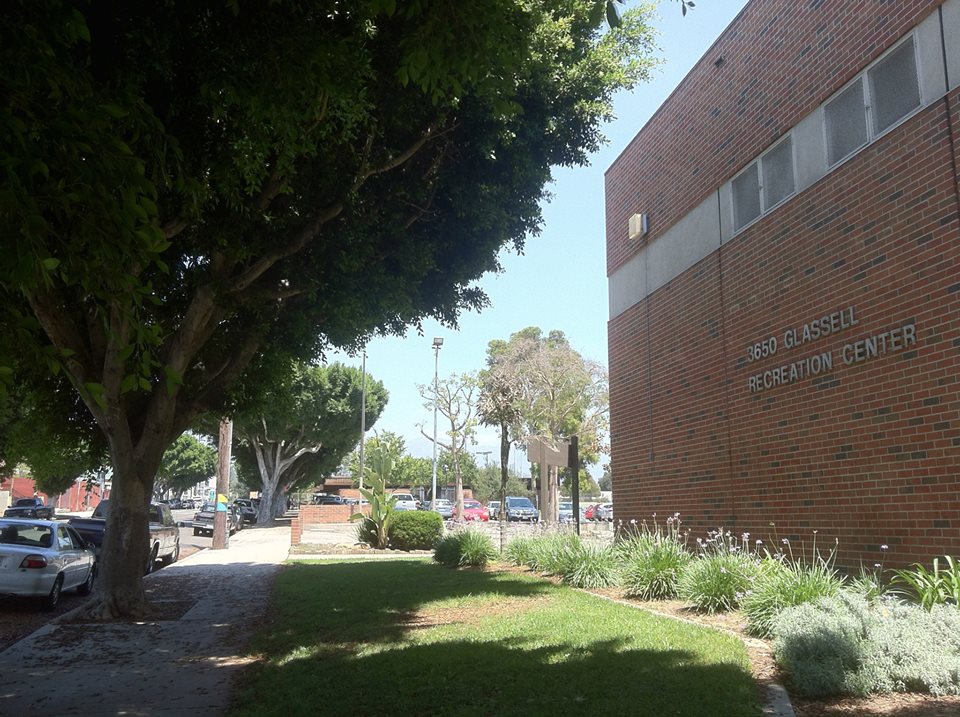

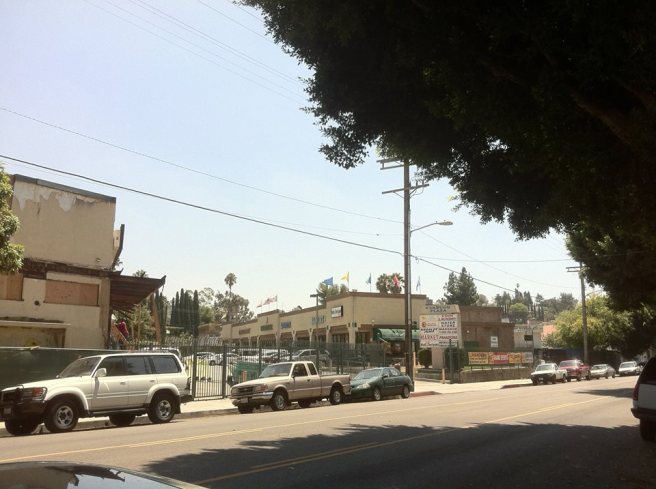


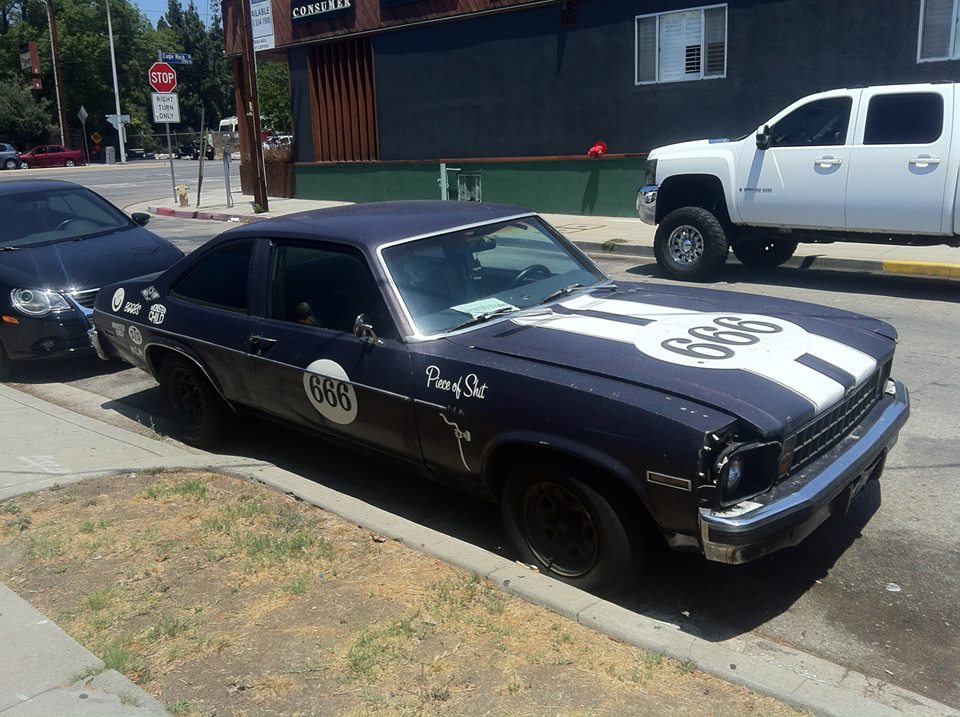
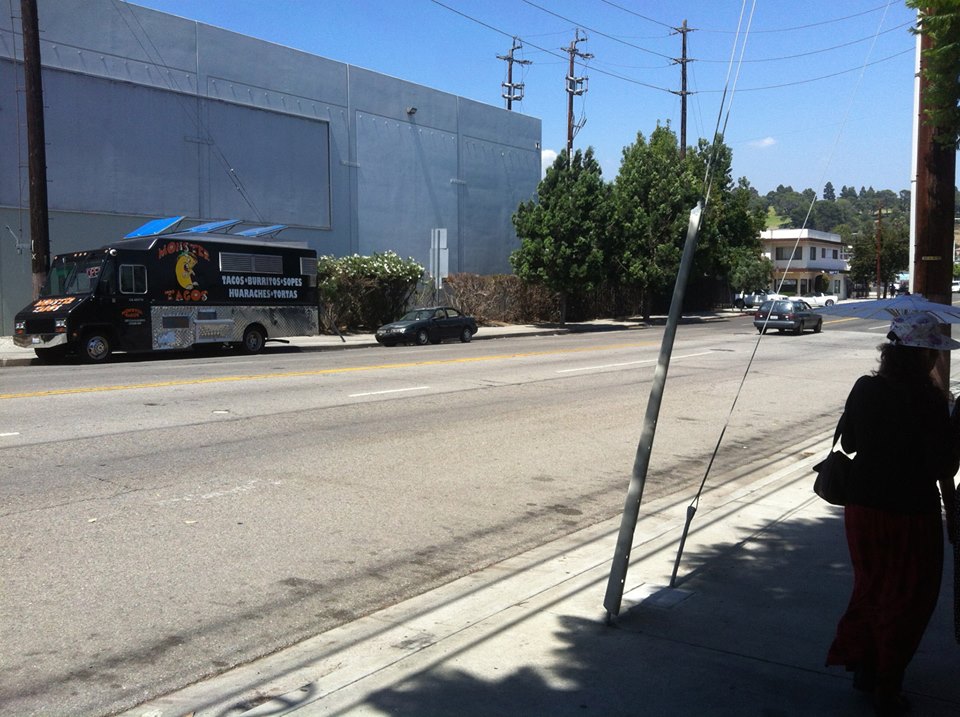

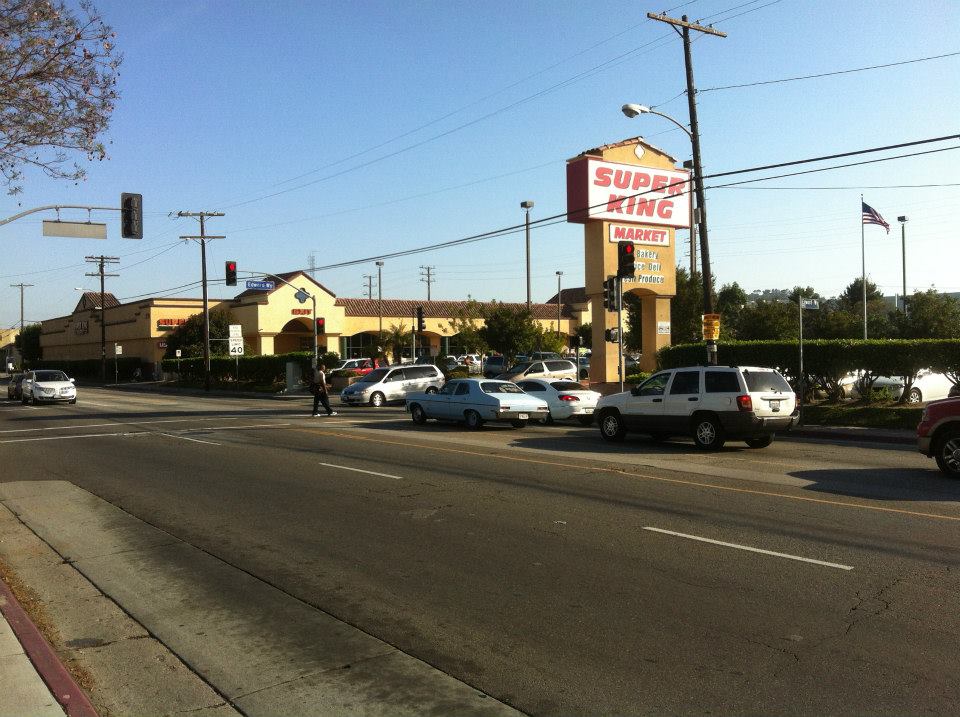
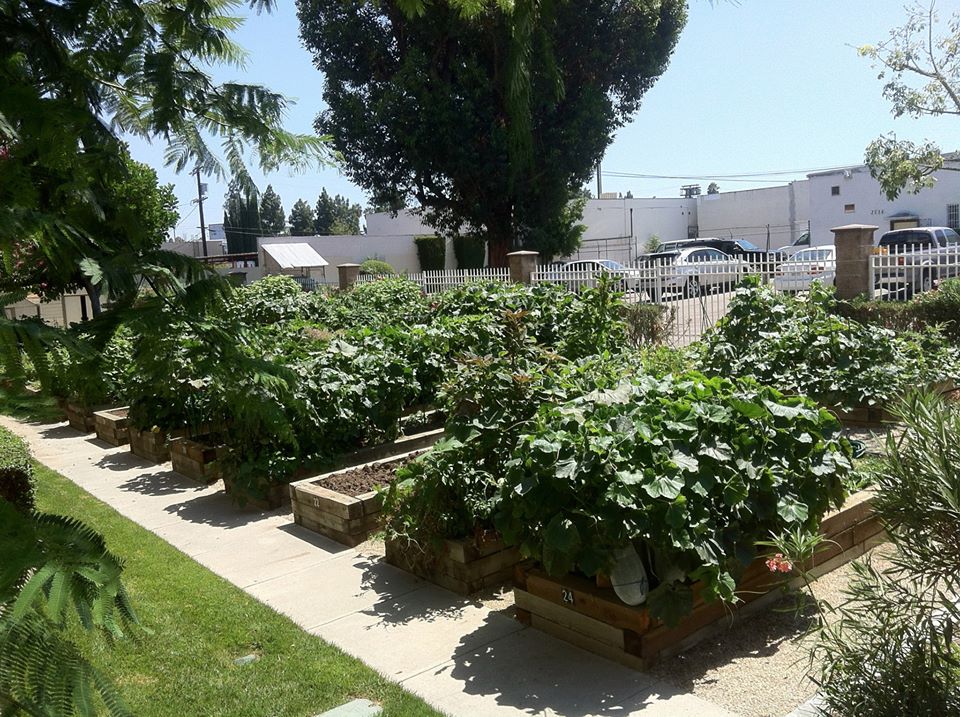
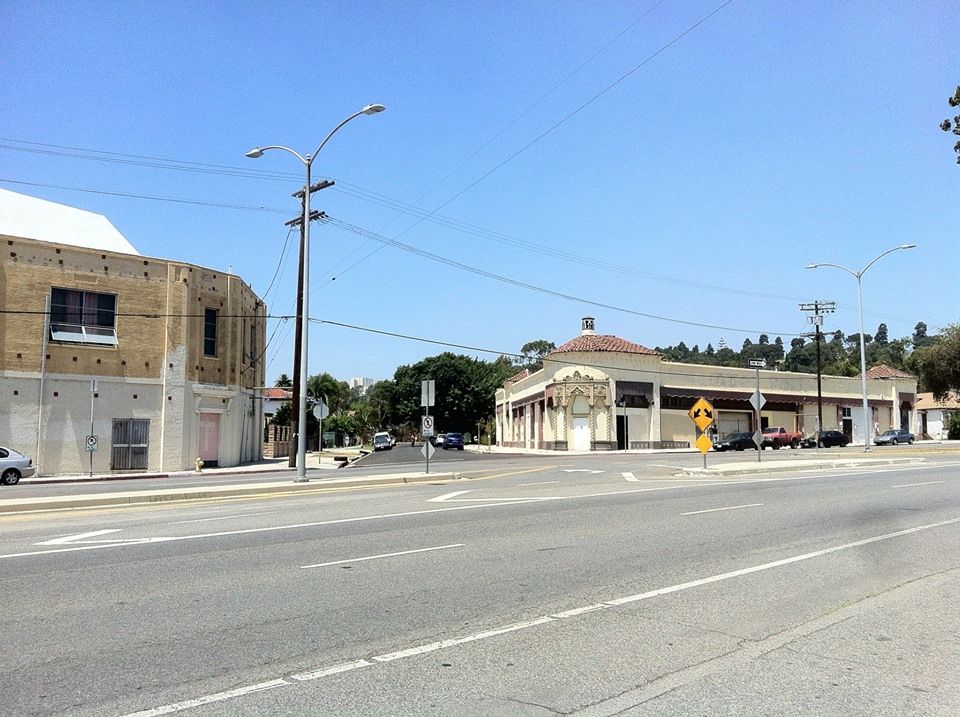
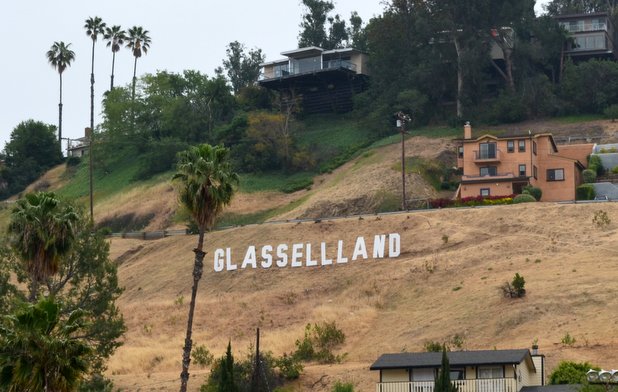
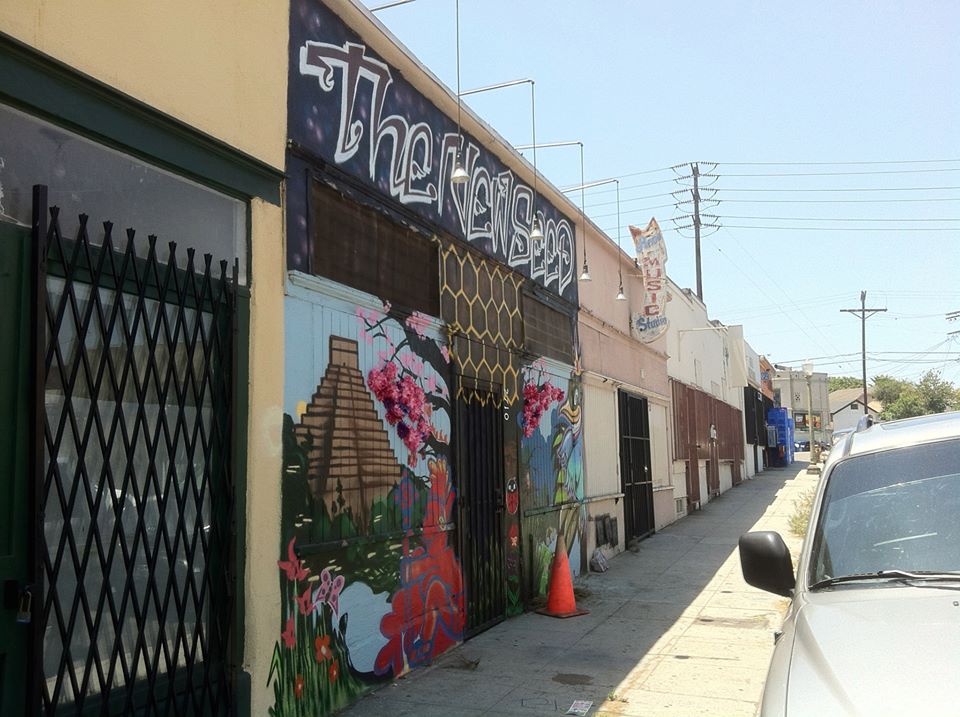
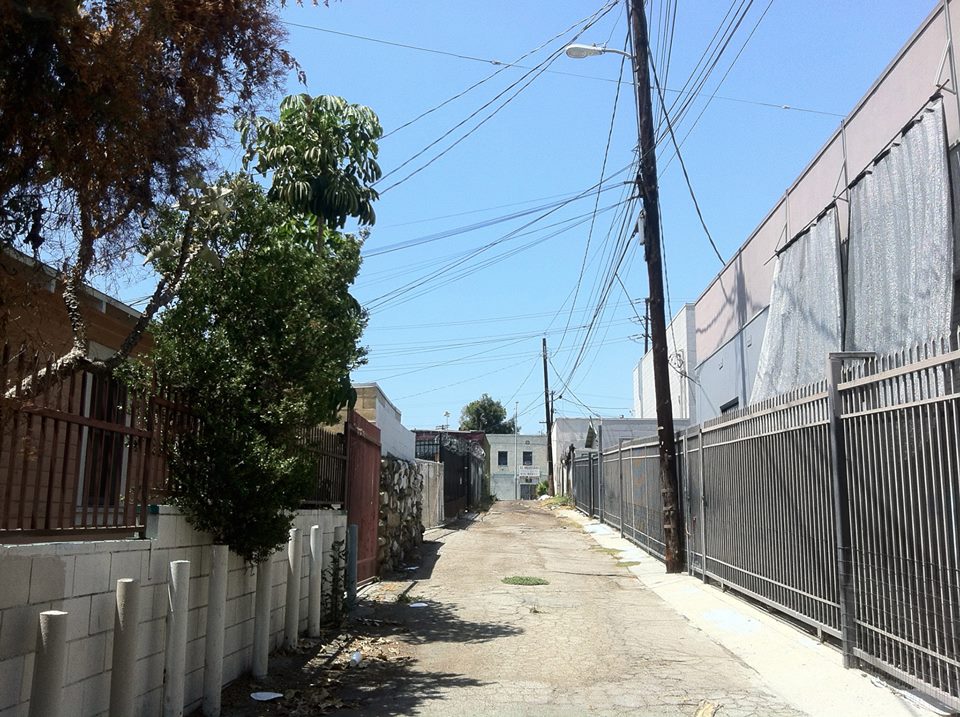

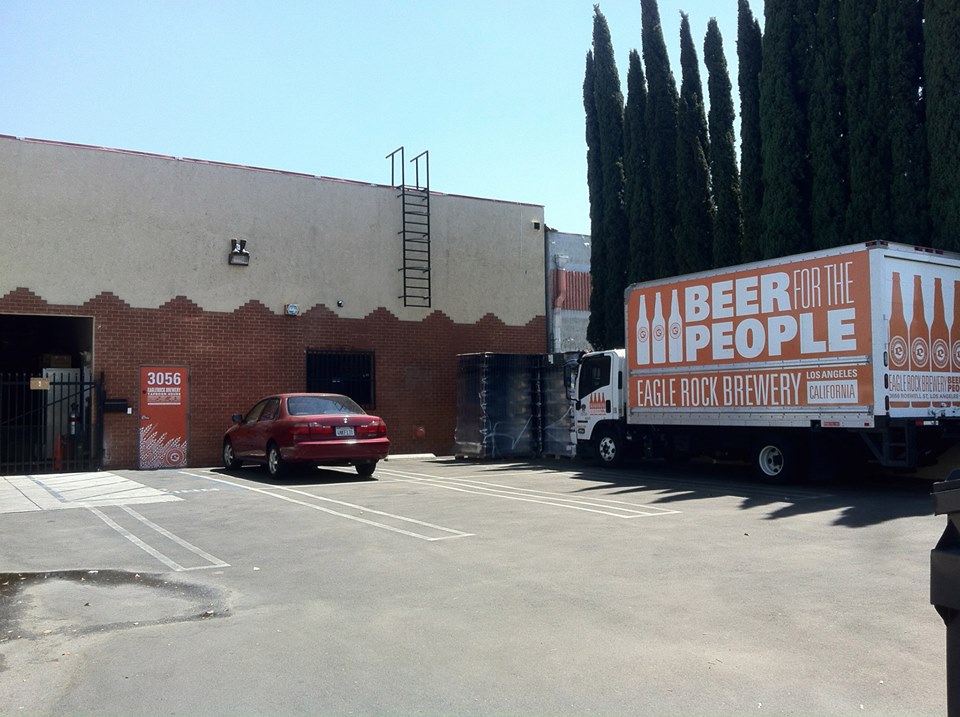

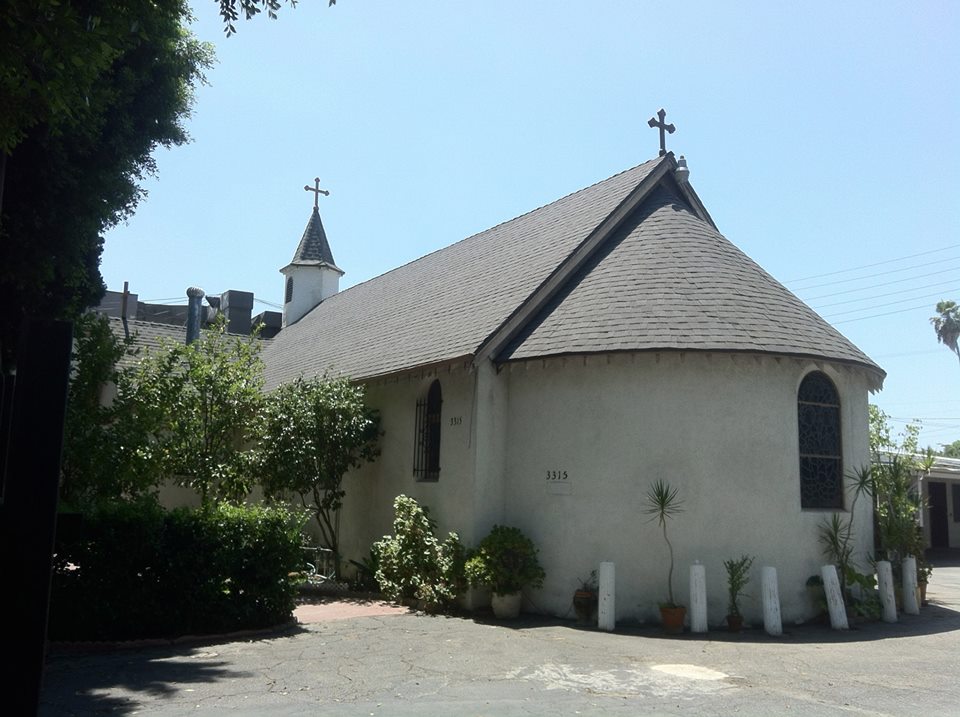

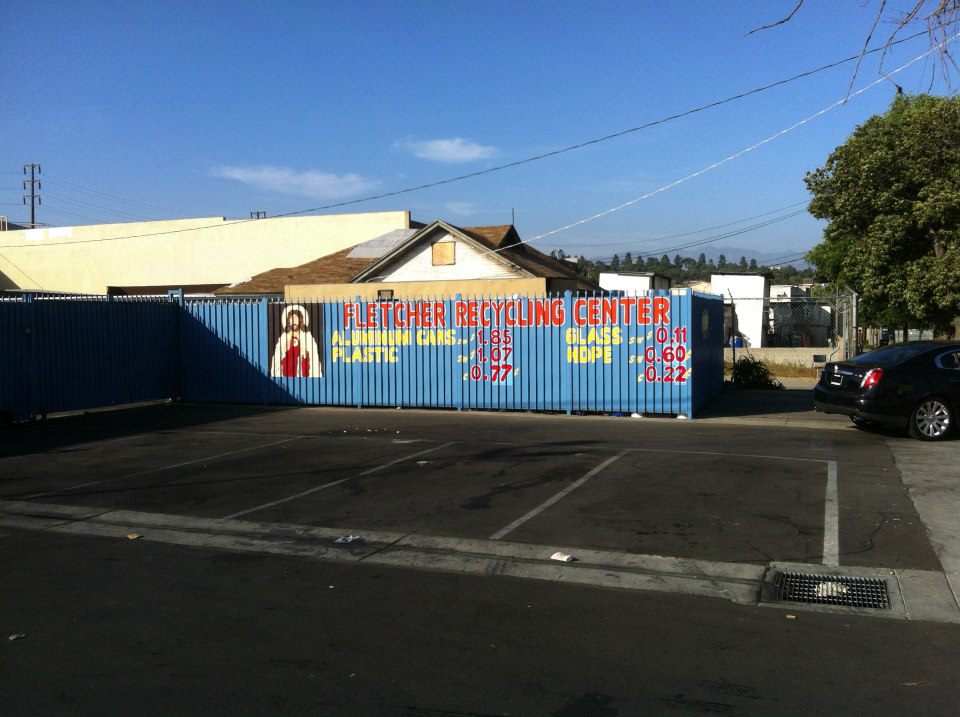

Thanks for the read, I think your “Hidden Canyon” shot is actually Moss Canyon.
LikeLike
It’s possible — I’m really not sure. I don’t remember exactly where I was.
LikeLike
The former Hoseiry Building was Pater Noster High School for Boys. just FYI.
LikeLiked by 1 person
Hello, my name is Sujei Alston. I am with Mujeres de la tierra. Mujeres de la Tierra (MDLT) is a non-profit organization based in Los Angeles, California committed to supporting women and families interested in becoming active participants and decision-makers in environmental and social issues impacting their neighborhoods, and to creating a network of trained community leaders to speak and act with influence.
Currently our team is looking at the Northeast Los Angeles area. Specifically looking at Junto’s Family Park that is in Glassell Park area. After Reading your extensive history blogs, I wanted to know if you have any historical or any other information that you could provide on the park itself and the near by locations. I hope to hear from you. I would also like to thank you for the wonderful history blogs. They are fun to read and very informative.
LikeLike
Hello! Thank you for reaching out. I don’t know much about Juntos Park but I did find a notice from 1998 about its creation in the Los Angeles Times. It says that five vacant parcels were purchased for the creation of the park and child care facility. The document file is “ND-168-98-RP.” I don’t know what that means but maybe someone at CD-13 does. I’m not sure who Councilman Soto-Martinez’s field deputy to the Glassell Park neighborhood is. You could also reach out to the Glassell Park Neighborhood Council. Good luck and thanks for the kind words!
LikeLike